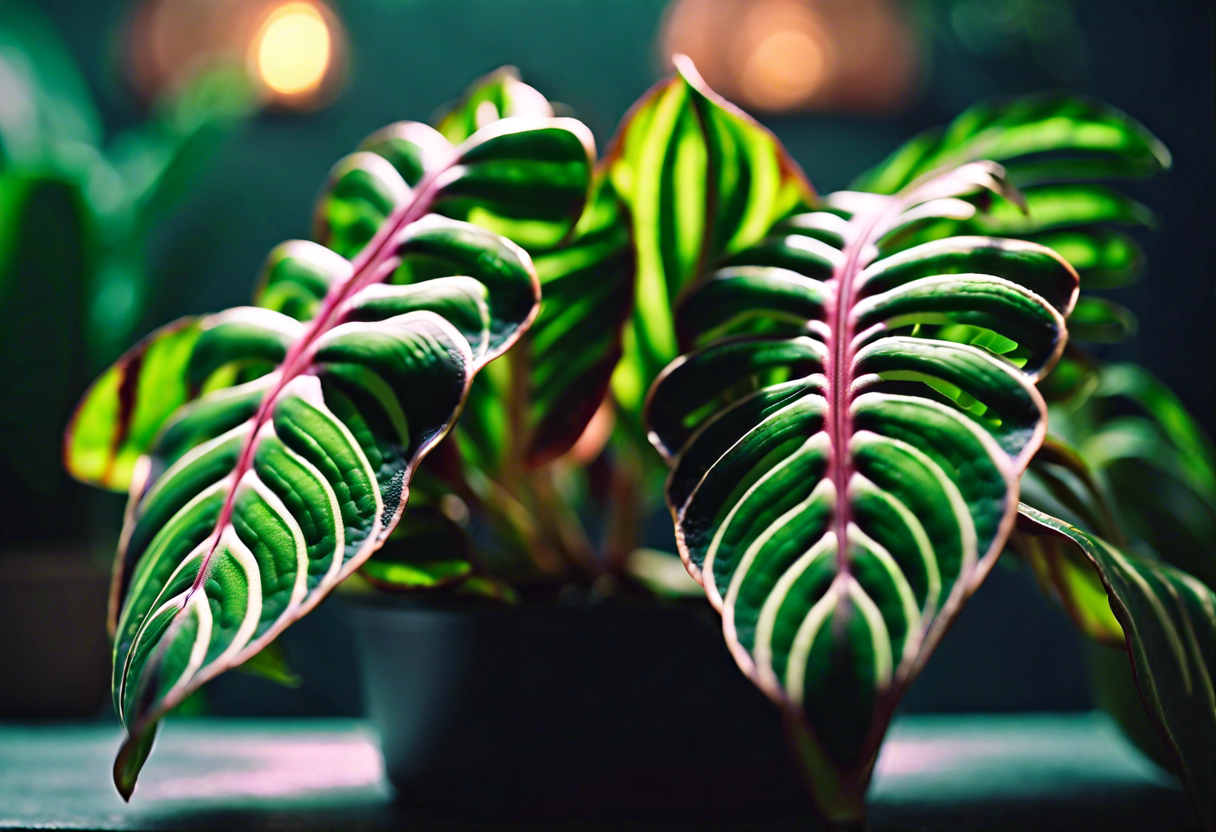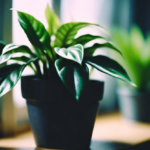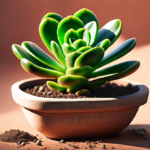Understanding the Prayer Plant: A Brief Introduction
The Prayer Plant, scientifically known as Maranta leuconeura, is a popular houseplant cherished for its stunning foliage and unique behavior. Native to the tropical rainforests of Brazil, this plant derives its name from the way its leaves fold together at night, resembling hands folded in prayer. With its vibrant colors and captivating movement, the Prayer Plant has become a favorite among plant enthusiasts and collectors alike.
The Prayer Plant boasts large, oval-shaped leaves with deep green hues, intricately marked with contrasting patterns of red veins. These striking patterns create an eye-catching display and contribute to the plant’s undeniable allure. Additionally, the leaves’ undersides feature a deep purple shade, adding to the plant’s overall visual appeal.
What sets the Prayer Plant apart from other houseplants is its unique ability to respond to changes in light. During the day, the leaves extend horizontally, maximizing their surface area to capture sunlight. As evening falls, the leaves gradually fold upward, creating a more compact appearance. This characteristic behavior gives the Prayer Plant an ever-changing and dynamic presence that is truly captivating to observe.
In terms of care, the Prayer Plant requires a moderate level of attention to thrive indoors. It flourishes best in well-draining soil that is rich in organic matter. A mixture of peat moss, perlite, and compost provides an ideal growing medium. Ensure the pot has drainage holes to prevent waterlogging, as excessive moisture can lead to root rot.
When it comes to lighting, striking the right balance is crucial for the Prayer Plant’s well-being. While it thrives in bright, indirect sunlight, prolonged exposure to direct sunlight can scorch its delicate leaves. Place the plant near a window with filtered light, or provide it with artificial fluorescent lighting if natural light is limited.
In terms of watering, the Prayer Plant prefers consistently moist soil. It is important to avoid both overwatering and underwatering. Allow the top inch of soil to dry out slightly between waterings to prevent rotting of the roots. Additionally, this plant appreciates a humid environment, so misting the leaves regularly or placing it near a humidifier can ensure optimal growth and health.
To maintain the Prayer Plant’s lush appearance and promote healthy growth, occasional pruning is necessary. Trimming away any yellow or damaged leaves helps redirect the plant’s energy towards new growth. Propagation is also possible through root division or stem cuttings, allowing you to expand your collection or share this beautiful plant with fellow enthusiasts.
The Prayer Plant (Maranta leuconeura) is a captivating houseplant known for its stunning foliage, unique leaf movement, and distinct patterns. By providing it with the right conditions, including well-draining soil, filtered light, adequate watering and humidity, as well as occasional pruning, you can enjoy the beauty of this remarkable plant in your home or office.
Essential Care Tips for Prayer Plant (Maranta leuconeura)
The Prayer Plant, scientifically known as Maranta leuconeura, is a vibrant and captivating houseplant that is native to the tropical rainforests of Brazil. Its unique ability to fold its leaves up at night, resembling hands folded in prayer, gives it its common name. If you are considering bringing a Prayer Plant into your home, here are some essential care tips to ensure its health and longevity.
1. Light Requirements: Unlike some other houseplants, the Prayer Plant prefers bright but indirect light. Direct sunlight can scorch its leaves, leading to unsightly brown patches. Place your plant near an east or west-facing window where it can receive the required amount of filtered light throughout the day.
2. Temperature and Humidity: This tropical plant thrives in warm and humid conditions. Ideally, keep the temperature between 65 to 85 degrees Fahrenheit (18-29 degrees Celsius). Ensure that it is not exposed to drafts or sudden temperature fluctuations. To maintain optimal humidity levels, mist the leaves regularly or use a humidifier near the plant.
3. Watering: The Prayer Plant appreciates consistent moisture but dislikes soggy soil. Water it when the top inch of the soil feels dry to the touch. During the growing season (spring and summer), provide enough water to keep the soil slightly moist, but not waterlogged. In the winter, reduce watering frequency as the plant’s growth slows down.
4. Soil and Fertilizer: A well-draining potting mix that retains moisture while allowing excess water to escape is ideal for the Prayer Plant. You can use a mix of peat moss, perlite, and sand. Fertilize the plant monthly during the growing season with a balanced houseplant fertilizer diluted to half strength. Avoid over-fertilizing, as it can cause leaf burn.
5. Pruning and Propagation: Regular pruning helps maintain a compact and bushy shape for your Prayer Plant. Trim off any yellow, damaged, or leggy leaves to encourage new growth. You can propagate the plant by division or stem cuttings. To divide, carefully separate the rootball into smaller sections and pot them individually. For stem cuttings, choose healthy stems and place them in moist soil or water until roots develop.
6. Pest Control: The Prayer Plant is generally resistant to pests but can occasionally attract pests like spider mites or aphids. Regularly inspect the leaves for any signs of infestation. If detected, treat the plant with organic insecticidal soap or neem oil to eliminate the pests.
With proper care and attention, your Prayer Plant will reward you with its stunning foliage and unique movements. Incorporate these essential care tips into your plant care routine, and you’ll be delighted with a healthy and thriving Prayer Plant in your home.
Understanding the Lighting Requirements for Prayer Plant
When it comes to the care of the Prayer Plant (Maranta leuconeura), providing the right lighting conditions plays a vital role in its overall health and growth. Understanding the lighting requirements of this fascinating plant is essential for ensuring its longevity and vibrancy.
The Prayer Plant thrives in medium to bright indirect light. It is important to strike the right balance as exposure to direct sunlight can scorch its delicate leaves, while insufficient light can cause the plant to become leggy and weak. Placing the plant near a north-facing window or a few feet away from an east or west-facing window is ideal. This way, it can benefit from bright, filtered light that mimics its natural habitat.
If you notice that your Prayer Plant’s leaves are fading, curling, or losing their vibrant colors, it may be an indication of too much light. In such cases, it is advisable to move the plant a few feet away from the window or use sheer curtains to filter the light. On the other hand, if the leaves are pale green and the gaps between the leaves are stretching, it could be a sign of insufficient light. Consider moving the plant closer to a window with indirect light or using artificial grow lights to supplement its light requirements.
It is important to remember that the lighting conditions within a home can vary from room to room. Factors such as curtains, blinds, nearby buildings, and even the geographical location can affect the intensity and duration of natural light. Observing your Prayer Plant closely and being responsive to its needs will help you find the perfect spot in your home.
In addition to finding the right location, maintaining a consistent light schedule is beneficial for the Prayer Plant. Aim to provide it with 10-12 hours of bright, indirect light each day. You can achieve this by ensuring it receives enough natural light during the day and supplementing it with artificial light if needed. Using timers can help automate the lighting schedule and ensure your plant receives the necessary light consistently.
By understanding and meeting the lighting requirements of the Prayer Plant, you can provide it with an environment that promotes healthy growth and beautiful foliage. Striking the right balance between light and shade will ensure that your Prayer Plant thrives and becomes a stunning addition to your indoor plant collection.
Watering and Humidity Needs of the Prayer Plant
The Prayer Plant, scientifically known as Maranta leuconeura, is a beautiful and popular houseplant. To ensure its healthy growth and vibrant foliage, proper watering and humidity levels are crucial. Understanding the watering and humidity needs of the Prayer Plant will help you create an optimal environment for this tropical beauty.
When it comes to watering your Prayer Plant, it’s important to strike a balance. Overwatering can lead to root rot and other issues, while underwatering can cause the leaves to wilt and dry out. As a general rule, it’s best to water your plant when the top inch of soil feels slightly dry to the touch. This will prevent waterlogging and promote healthy root development.
However, it’s important to note that the Prayer Plant prefers slightly moist soil, avoiding prolonged dry periods. Regularly check the moisture level of the soil and adjust your watering routine accordingly. During the warmer months, you may need to water your plant more frequently, while in winter, reduce the frequency to prevent water stagnation.
Humidity is another crucial aspect of the Prayer Plant’s care. As a tropical plant native to the rainforests of Brazil, it thrives in high humidity environments. To simulate this natural habitat, you can increase humidity around your plant by misting the leaves with water using a spray bottle or placing a tray of water near the plant. This will help prevent the leaf tips from turning brown and maintain the plant’s lush appearance.
If you live in a dry climate or have low humidity indoors, you can also use a humidifier to maintain the appropriate moisture levels. Grouping your Prayer Plant with other humidity-loving plants can also create a microclimate with increased humidity.
Avoid placing your Prayer Plant near heat sources, such as radiators or air conditioning vents, as they can cause a decrease in humidity levels. Additionally, ensure proper air circulation around your plant to prevent the development of fungal diseases.
To sum up, the Prayer Plant requires regular watering, keeping the soil slightly moist but not waterlogged. Adjust the watering frequency according to the season and the moisture level of the soil. Increasing humidity is essential for the plant’s health and appearance, and you can achieve this by misting, using a humidifier, or creating a humidity-loving plant cluster.
Pruning and Propagating Prayer Plant: Maintenance Tips for Healthy Growth
Pruning and propagating a Prayer Plant (Maranta leuconeura) are essential maintenance tasks that help promote healthy growth and maintain the plant’s overall appearance. Regular pruning keeps the plant in shape while propagation allows you to multiply your Prayer Plant collection. Here are some tips on how to prune and propagate your Prayer Plant effectively.
When it comes to pruning your Prayer Plant, the key is to focus on removing dead, damaged, or yellowing leaves. Start by inspecting the plant for any signs of diseases or pests. If you notice any affected leaves, prune them off with clean pruning shears. Be sure to sterilize the shears with rubbing alcohol between each cut to prevent the spread of any potential infections.
Additionally, if you find any overcrowded or tangled stems, you can selectively trim them back to improve the plant’s overall appearance. Trimming back leggy stems encourages the Prayer Plant to branch out and grow bushier. Make sure to snip just above a leaf node or junction, as this is where new growth will emerge from.
Propagation is an excellent way to expand your Prayer Plant collection or share it with fellow plant enthusiasts. The most common method of propagation for Prayer Plants is through stem cuttings. To propagate your Prayer Plant, follow these simple steps:
- Select a healthy stem with at least two or three leaves on it.
- Use clean, sharp scissors or a knife to make a clean cut just below a leaf node.
- Remove any leaves at the bottom of the stem, leaving only one or two leaves at the top.
- Dip the cut end of the stem into a rooting hormone powder to encourage root development.
- Plant the cutting in a well-draining potting mix, making sure to bury the node where the roots will develop.
- Place the pot in a warm and humid location, away from direct sunlight.
- Mist the cutting regularly to maintain high humidity levels and encourage root growth.
- After a few weeks, you should start to see new roots forming. At this point, you can treat the propagated plant as a mature Prayer Plant.
Remember to keep your newly propagated Prayer Plant in a warm, humid environment until it has established strong roots. This will ensure its successful transition and growth as an independent plant.
Regular pruning and propagating are essential for maintaining the health and appearance of your Prayer Plant. By following these care tips, you can enjoy a thriving and beautiful Prayer Plant collection in your home. Happy pruning and propagating!
Conclusion
The Prayer Plant (Maranta leuconeura) is a stunning and popular houseplant known for its vibrant foliage and unique leaf movement. With its eye-catching patterns and graceful folding leaves, this plant has become a favorite among plant enthusiasts. In this care guide, we have covered various aspects to help you successfully cultivate and maintain your Prayer Plant.
Understanding the Prayer Plant: A Brief Introduction
The Prayer Plant, native to the tropical regions of the Americas, gets its name from the way its leaves fold together at night, resembling hands in prayer. It is an evergreen perennial that thrives in warm, humid environments. With its low-maintenance nature and ornamental appeal, this plant is an excellent choice for both beginners and experienced plant lovers.
Essential Care Tips for Prayer Plant (Maranta leuconeura)
To ensure the health and vitality of your Prayer Plant, it is important to provide it with the right care. This includes placing it in a suitable location with indirect light and maintaining the ideal temperature range of 60-85°F (15-29°C). Adequate watering is crucial, as overwatering or underwatering can harm the plant. Fertilizing every two weeks during the growing season and regular misting can also enhance its growth.
Lighting Requirements for Prayer Plant: Finding the Right Balance
Finding the perfect balance of light is essential for the Prayer Plant. While it thrives in bright, indirect light, direct sunlight can scorch its delicate leaves. Placing it near a north or east-facing window is ideal, as it will receive ample light without being exposed to harsh rays. However, if you don’t have access to natural light, artificial fluorescent lights can be a suitable alternative.
Watering and Humidity Needs of the Prayer Plant
Proper watering is crucial for the Prayer Plant, as it prefers consistently moist soil but doesn’t tolerate waterlogged conditions. It is best to water the plant when the top inch of soil feels dry, ensuring thorough watering until it drains out from the bottom. Additionally, maintaining high humidity levels is crucial for this tropical plant. Regular misting, using a humidifier, or placing the plant on a tray filled with water and pebbles can help increase humidity.
Pruning and Propagating Prayer Plant: Maintenance Tips for Healthy Growth
Regular pruning is beneficial for refreshing the Prayer Plant’s appearance and maintaining its health. Remove yellow or damaged leaves, as well as any leggy or overcrowded stems. Propagating your Prayer Plant is also a rewarding experience. You can easily propagate it through stem cuttings in water or soil. Once the cutting develops roots, it can be potted in a suitable mix and cared for like a mature plant.
By following the essential care tips mentioned in this Prayer Plant care guide, you can create an optimal environment for your plant’s growth and enjoy its stunning beauty for years to come. From understanding its unique characteristics to providing the right lighting, watering, and pruning, you have the knowledge to keep your Prayer Plant healthy and thriving. Cultivating this marvelous tropical plant will undoubtedly add charm and vitality to any indoor space.


